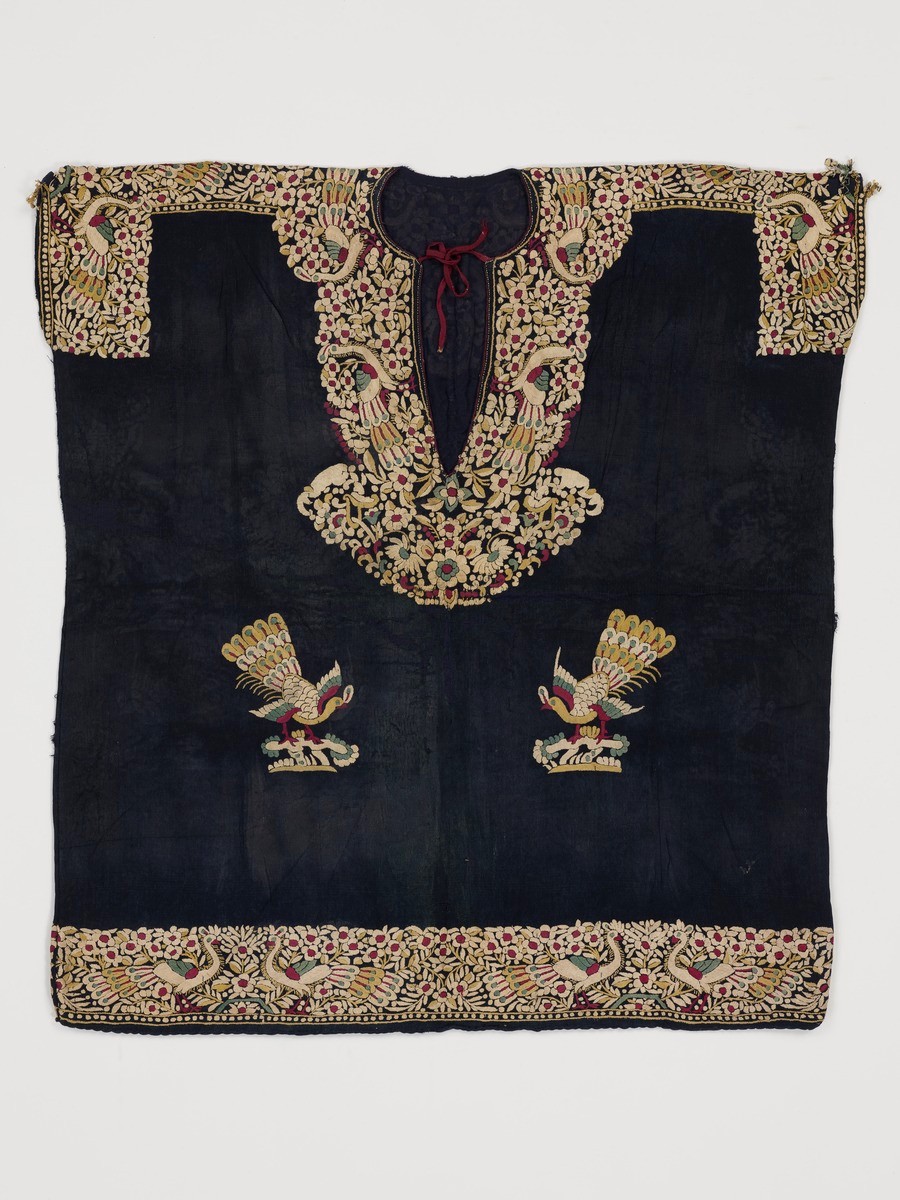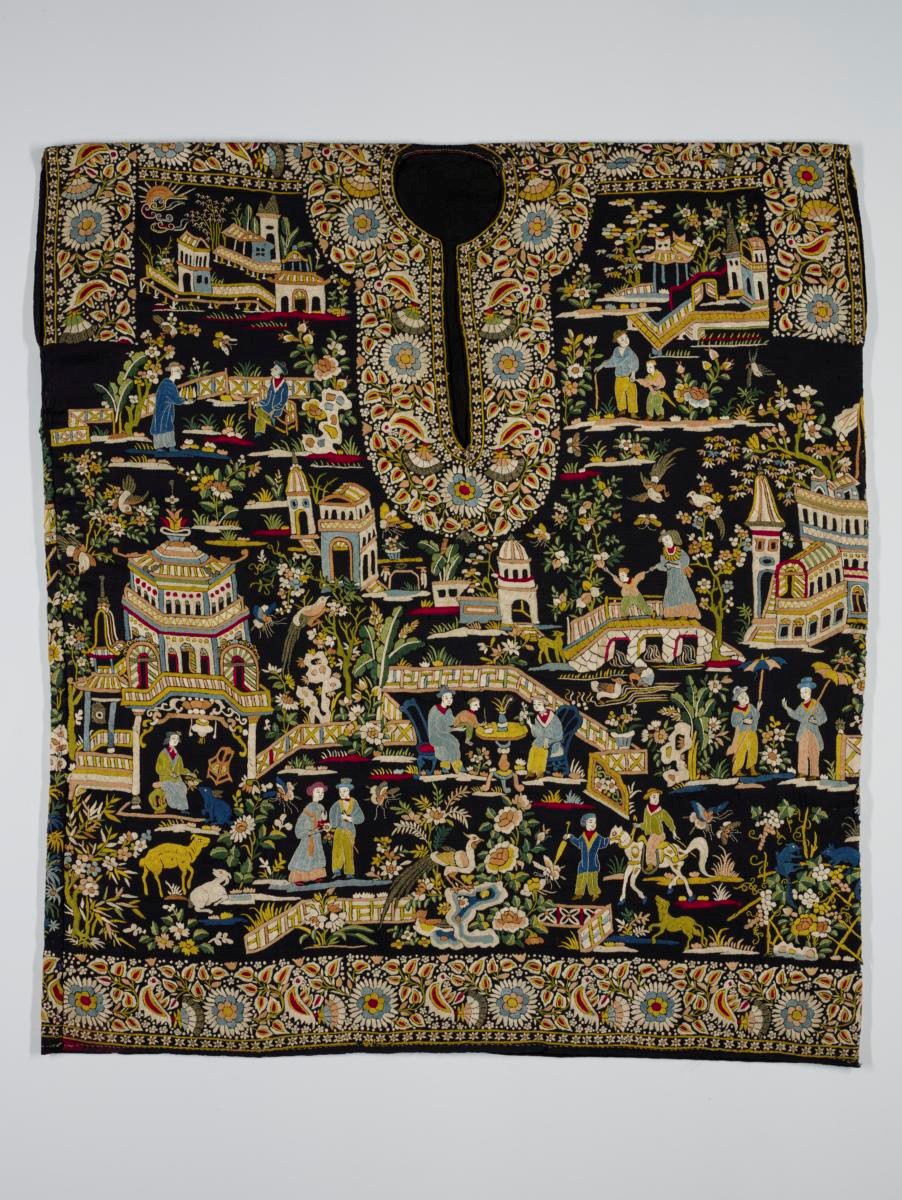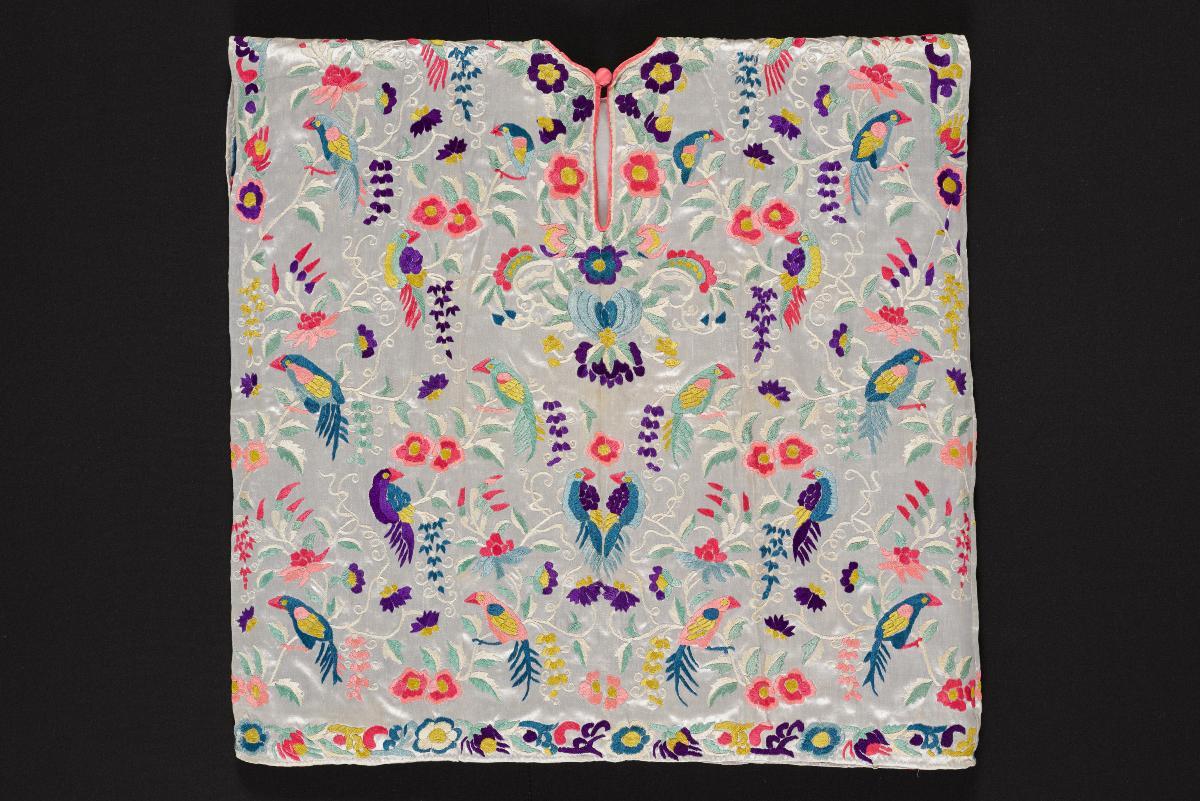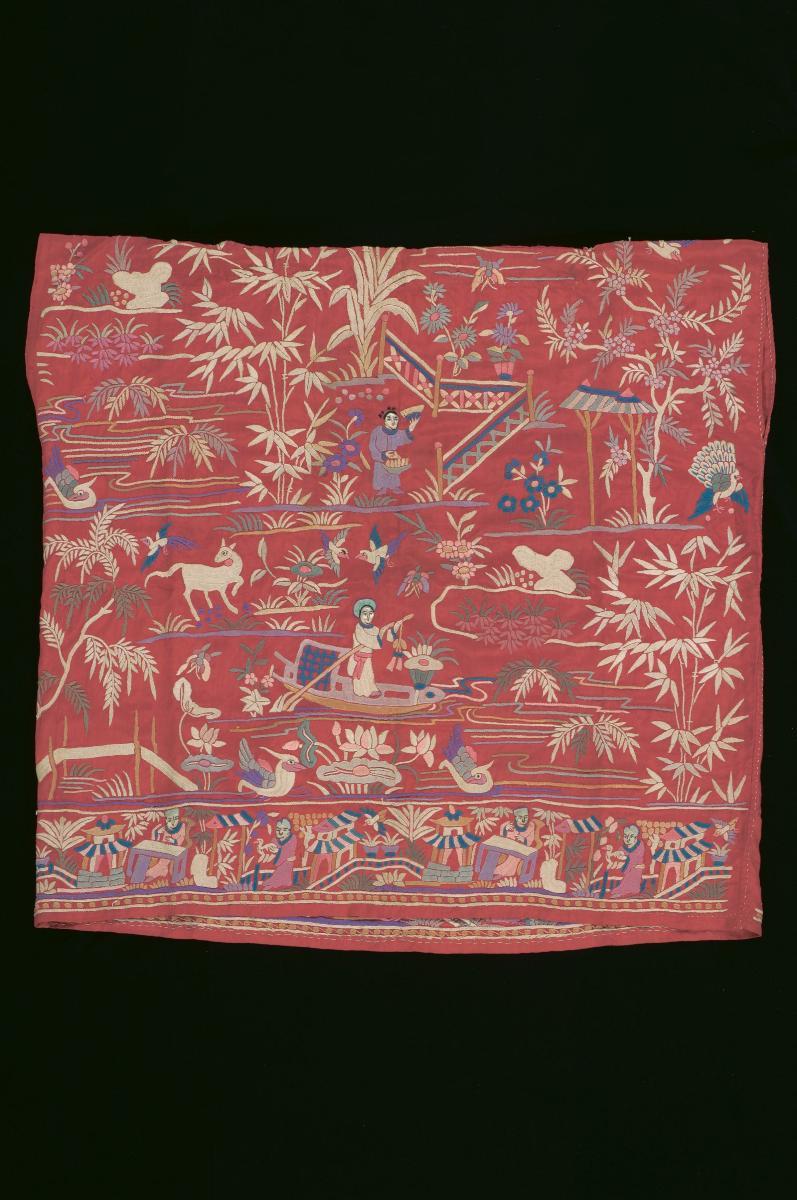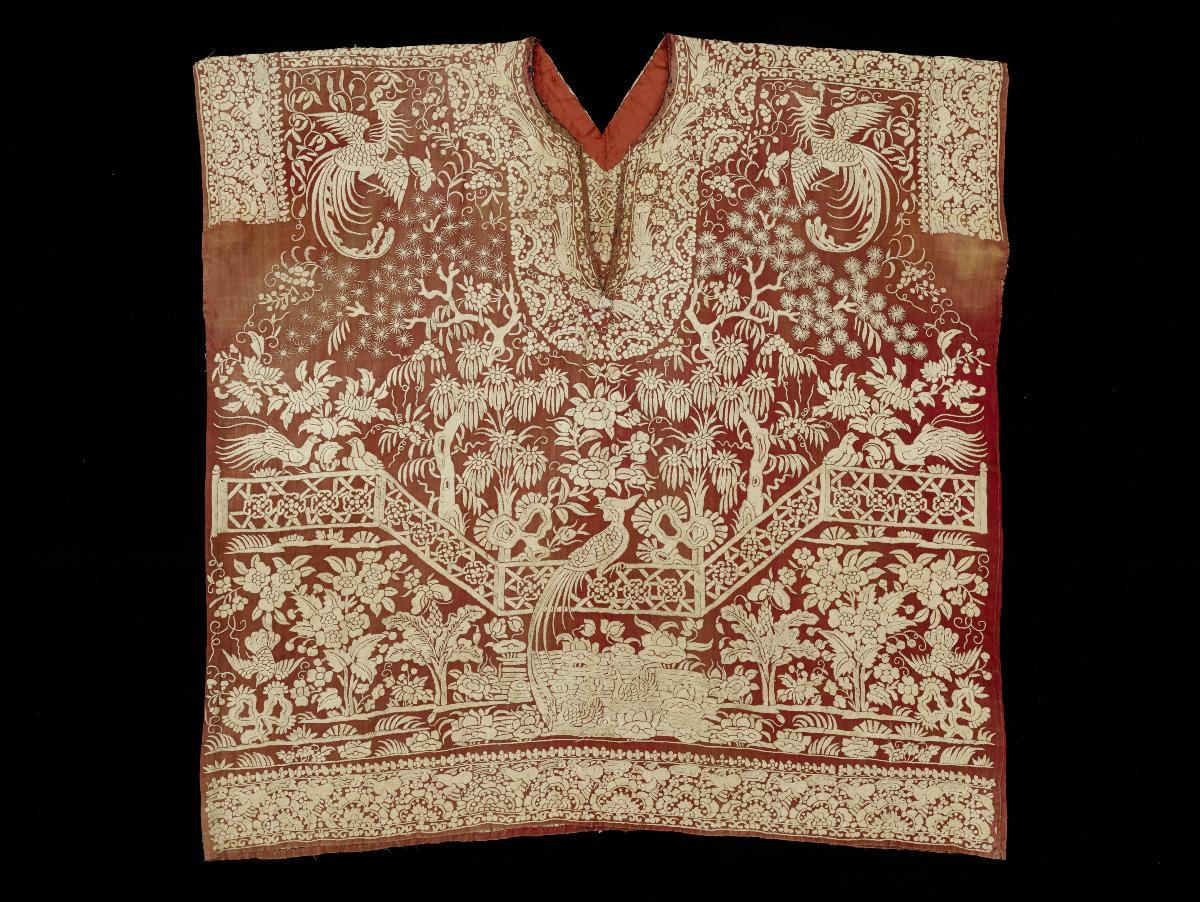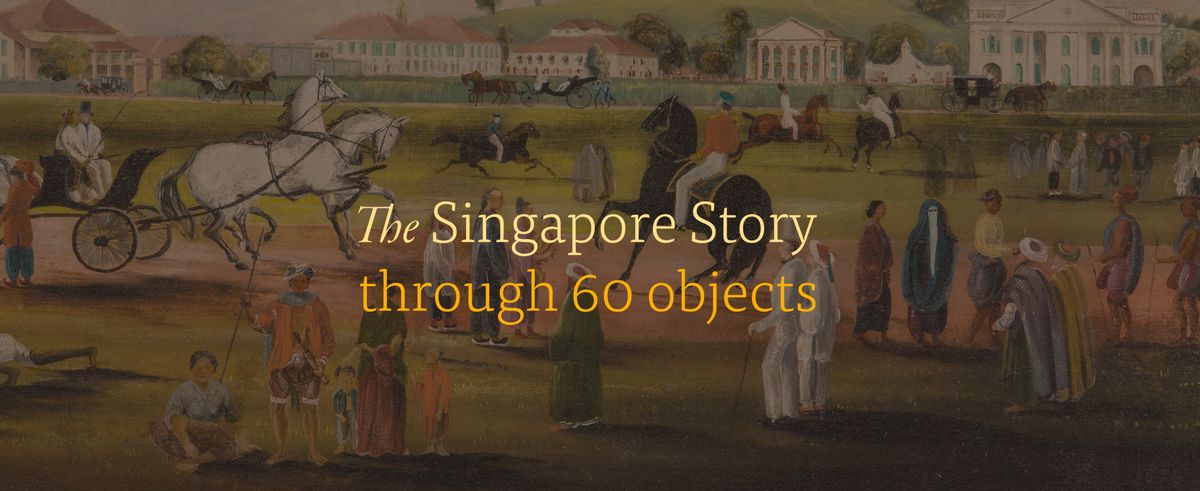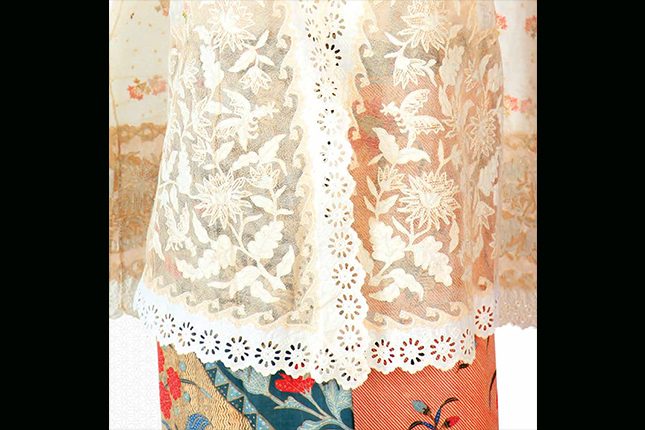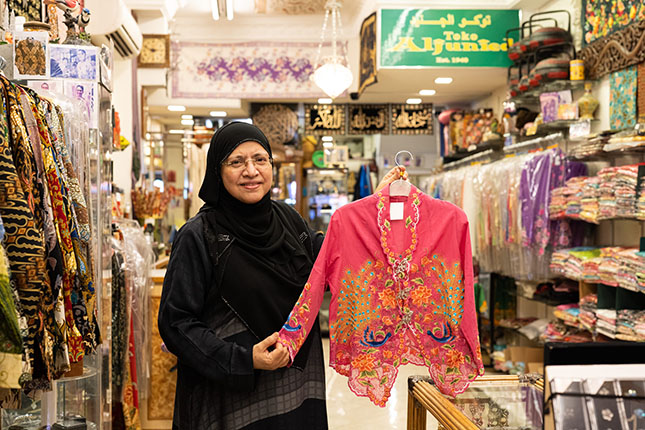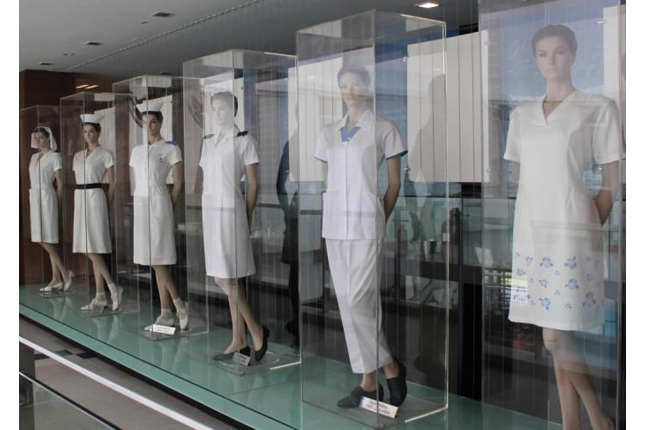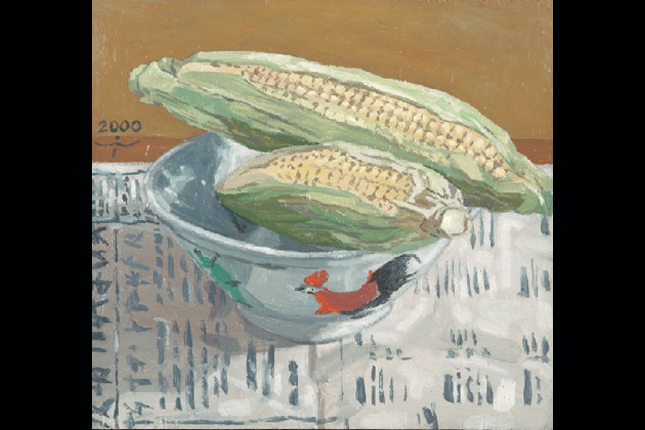A jhabla is a tunic worn by Parsi children before their initiation into the Zoroastrian faith. It is a sleeveless garment with a small round neck opening, often made from satin silk or twill-patterned silk and embroidered with silk threads. They were brought to Gujarat and Bombay by Parsi merchants who travelled to China to trade. The borders (kor) along the neck, shoulder, and hem feature peonies and peacocks. Despite being considered unlucky in the Parsi tradition, peacocks symbolise wealth and prestige in Chinese art. The two confronting peacocks with tail feathers fanned open were believed to bless the wearer. The flowers represent angels in the Zoroastrian faith.




